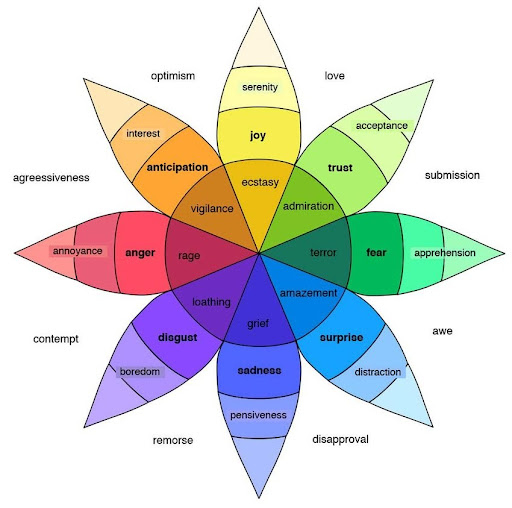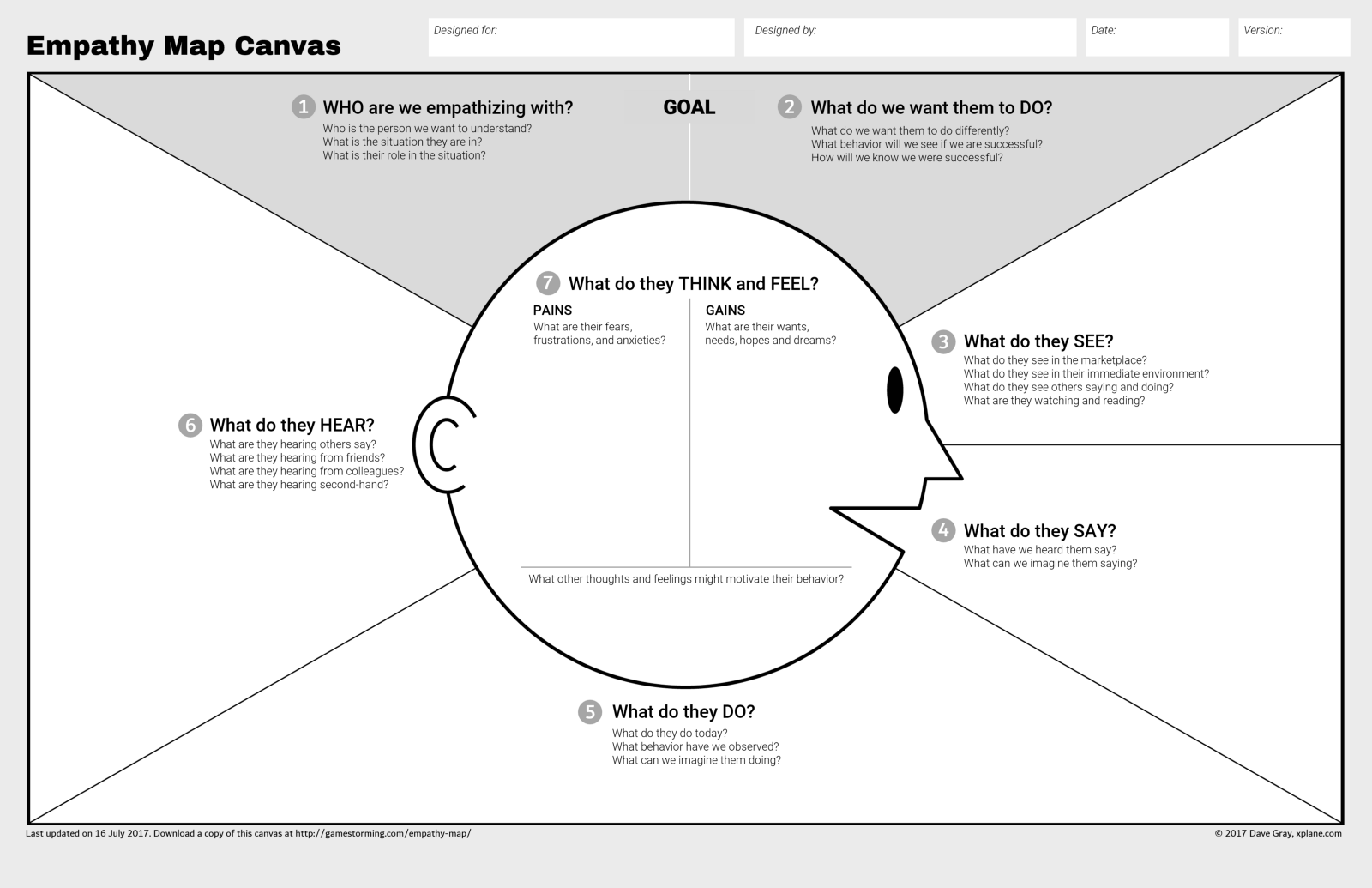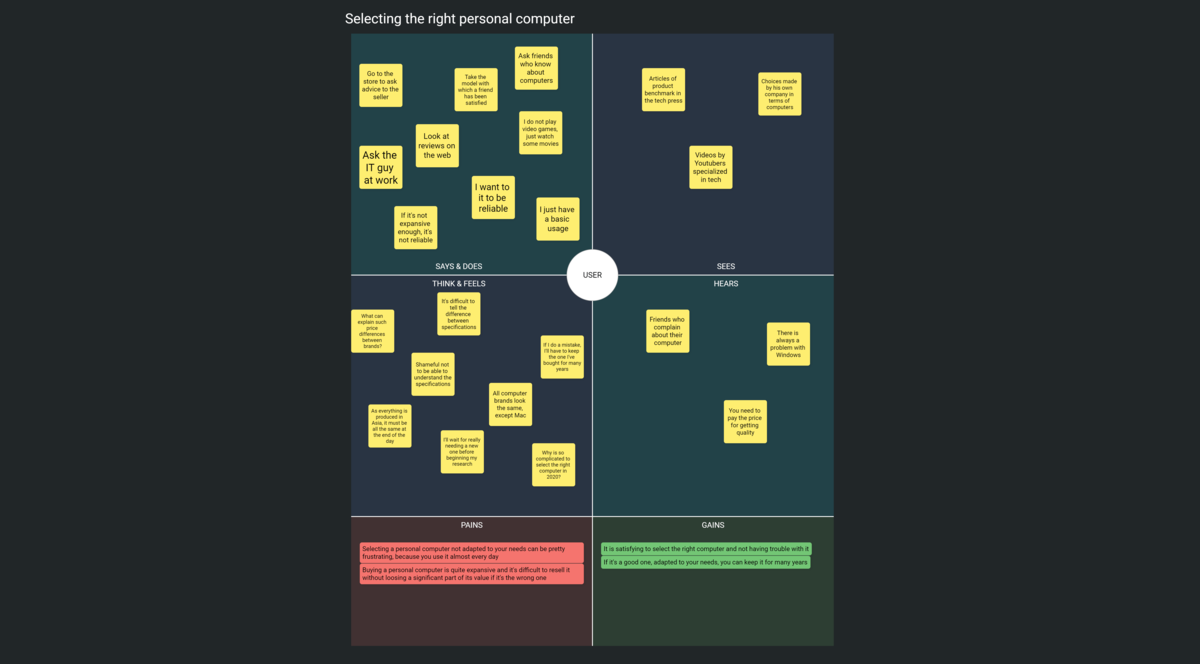What is an Empathy Map?
An Empathy Map is a design thinking method allowing teams to hone in on the behaviors, attitudes, needs, and expectations of their target customers (or personas) in a visual way.
Created by Dave Gray, founder of Xplane and an expert in design innovation strategy, and widely adopted by the Agile and Design Thinking communities, the Empathy Map is especially useful during the product design or new offer development phases of any project. In many ways, it’s a distillation of customer data and insights that adds greater breadth and depth to a team’s understanding of their key customer personas. The key difference here is the need to approach this information from a more ‘emotional’ or human perspective.
Additionally, the Empathy Map workshop usually involves a cross-functional team that represents the different organizations that touch the customer experience in some way, including product, marketing, and sales. The goal here is to align teams around a unified vision for how target customers think, feel, and act. The decisions made during this workshop can ideally be used to streamline the product design and development process.
How to build an Empathy Map
The Empathy Map is made up of six sections revolving around a target persona’s “head” (at the center of the canvas), each addressing a specific set of questions:
Sections 1 and 2: What does the customer SAY and DO?
- What is the customer’s attitude towards others?
- How does the customer behave in public?
- What activities does the customer do on a daily basis?
Section 3: What does the customer SEE?
- What media does the customer consume?
- Who are the customer’s biggest influences (friends, spouse, colleagues, etc.)?
- What books does the customer read?
- What films does the customer watch?
- What offers in the market is the customer exposed to?
Section 4: What does the customer HEAR?
- What advice do the customer’s key influencers offer?
- What warnings or criticisms does the customer hear?
- What messages does the customer hear from the competition?
Sections 5 and 6: What does the customer THINK and FEEL?
- What matters most to the customer?
- What thoughts occupy the customer’s mind?
- What are the customer’s aspirations?
- What are the customer’s concerns?
The final step (within the “head”) involves identifying the following:
PAINS: What are the customer’s pain points when using a product or service?
GAINS: What benefits result from using that product or service?
Things to keep in mind when building an Empathy Map
Although the Empathy Map is easy to create, it has a few pitfalls to be aware of.
First, you must always put yourself in the customer’s shoes and set aside your own opinions and feelings as you go through this exercise. Because the persona’s “head” sits at the center of the canvas, it’s a constant reminder to approach this from the customer’s perspective.
Second, each Empathy Map can only represent a single customer persona. So if you have a number of customer segments to address, you’ll need to repeat this exercise for each.
Third, the answers to the questions in each section must be based on factual information supported by the data collected (i.e. studies, customer interviews, etc.). Whenever possible, pull this information verbatim from these qualitative data sources instead of simply paraphrasing. This will help ensure the results of this exercise are firmly rooted in reality.
Fourth, because the Empathy Map is based on honing in on a customer’s ‘emotional intelligence,’ you need a consistent way to describe their emotions. Psychologist and anthropologist Paul Ekman identified six universal emotions in the 1970’s—sadness, joy, anger, fear, disgust, and surprise—before expanding this list in the 1990’s to include fun, satisfaction, embarrassment, excitement, guilt, pride, relief, pleasure, shame, and contempt.
A more detailed variation of this is Robert Plutchnick’s well-known ‘Wheel of Emotions’:

Wheel of emotions by Robert Plutchik.
Fifth, since building an Empathy Map is, first and foremost, a collaborative exercise, everyone must be able to express their ideas openly before discussing them as a group. The workshop’s moderator should keep tabs on the ideas that occur most frequently, as these insights are most likely to populate the Empathy Map canvas when all is said and done.
Finally, an updated version of the canvas was released by Dave Gray in 2017 to make it easier for teams to adapt the method to various needs. A more complete—but also more complex—take on the original Empathy Map canvas, this version now incorporates a new "OBJECTIVES" section and also places the "THINK and FEEL" section directly inside the persona’s head at the center of the canvas. See example below.

New Empathy Map canvas (2017).
Suggested resources to learn more about the Empathy Map method
- An article by Dave Gray explaining the Empathy Map method: Empathy Map.
- An overview by Dave Gray about the new Empathy Map canvas and how to use it: Updated Empathy Map Canvas.
- Three videos about filling in the Empathy Map canvas by Romain Rampa—a leader in innovation management: Empathy Map Canvas.
